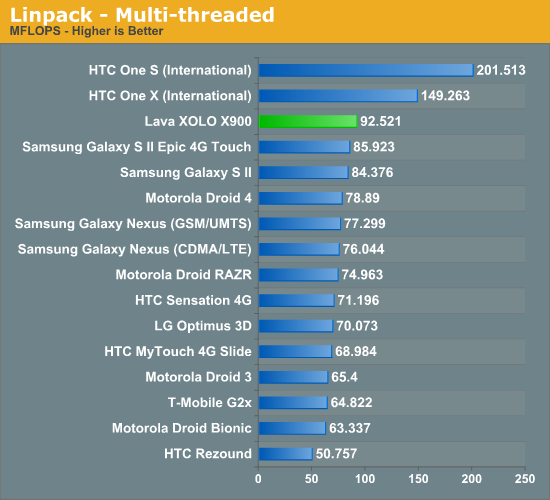[citation][nom]noob2222[/nom]One benchmark Intel was able to win, one.... Not sure how thats bragging rights or such a great thing. As far as claiming pure single core, your forgetting it still runs HT, so its single +. As for making a dual core, they need to make sure 22nm can actually use less power as its single core runs middle of the pack on battery life. Dual core would drain the battery in a matter of minutes if its anything like Ivy bridges power saving of 4%. Intel has a long way to go, and ARM isn't just sitting there waiting to be overtaken.[/citation]
I know, one benchmark isn't bragging rights, was just saying that this is possible too. Even on all the other CPU benchmarks, the Xolo was in the top 5 or 3. THAT however, is bragging-rights worthy.
As far as HT goes, it really didn't make too much of a difference in one of the benchmarks in which it was explicitly tested (read the article, feeling too lazy to link

) so it's pretty much single core, single threaded performance.
Anyway, even in the desktop world, it's well known that actual physical cores perform far better than logical HT cores.
Battery life: Again, they used a weak-ish battery as this phone's based on the reference design. Normalized battery life, which takes into account the battery and all wasn't award winning but it was
decent. No "it'll last 5 min on a charge!". Plus it was more than a lot of ARM-based chips that showed poorer performance, so really i can't see a reason for the negativity.
The reviewer at AnandTech clearly states that the battery life fears regarding x86 are a "myth".
Dual core Atoms are for tablets
only, at least for now.
The increase in efficiency realized by IB might not be much compared to SB, but compared to the Core architecture of the Core 2 series, IPC alone should lead to a huge jump in battery life, plus lower TDP of the 22nm Atoms will be a bonus too.
As an example of IPC improvements:
Read full article here.
As an example of resulting efficiency improvements:
and combining the net score for both single and multi-threaded benchmarks:
Read the full thing:
http://www.tomshardware.com/reviews/sandy-bridge-efficienct-32-nm,2831-8.html







